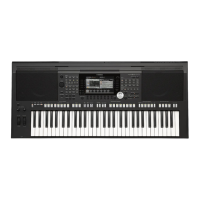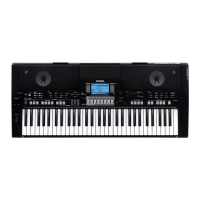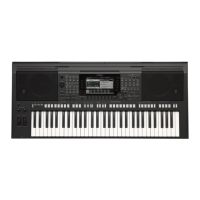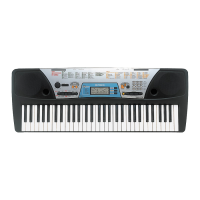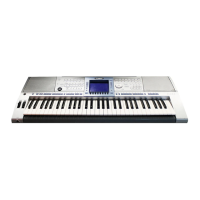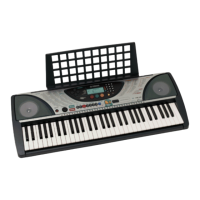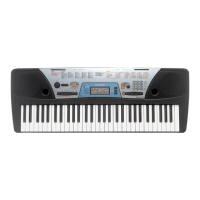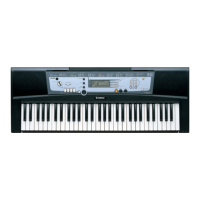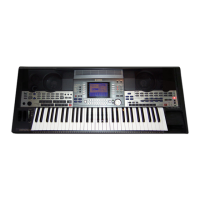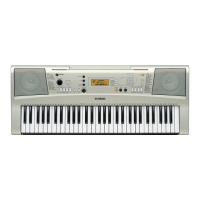PSR-S975/S775 Reference Manual 91
8
Microphone/Guitar Input
Saving the Microphone/Guitar Settings
All the settings (MIC/GUITAR and TALK pages) are saved together as a single file. Up to ten files can be
saved.
1 On the EQ/CMP SETTING display (in step 3 on page 90), press the [I] (USER MEMORY)
button.
2 Press the [6 ] (SAVE) button to save the file to the USER drive.
For details on the naming and saving procedures, refer to “Basic Operations” in the Owner’s Manual.
NOTE The microphone/guitar setting file can be saved only to internal USER drive. If you want to save this setting on the USB flash drive, save the User Effect
file on the display called up via [FUNCTION] → TAB [F] MENU 2 → [G] SYSTEM → TAB [E][F] SETUP FILES → [H] USER EFFECT FILES.
MIC/GUITAR Page
3BAND EQ (selected by [A]/[B] buttons)
EQ (Equalizer) is a processor that divides the frequency spectrum into multiple bands which can be
boosted or cut as required to tailor the overall frequency response. This instrument features a high-grade
three-band (LOW, MID and HIGH) digital equalizer function for the microphone/guitar sound.
NOISE GATE (selected by [C]/[D] buttons)
This effect mutes the input signal when the input from the microphone/guitar falls below a specified level.
This effectively cuts off extraneous noise, allowing the desired signal (vocal, etc.) to pass.
COMPRESSOR (selected by [C]/[D] buttons)
This effect holds down the output when the input signal from the microphone/guitar exceeds a specified
level. This is especially useful for smoothing out vocals that have widely varying dynamics. It effectively
“compresses” the signal, making soft parts louder and loud parts softer. For a maximum compression
effect, set RATIO to a high setting and adjust the OUT parameter for optimum volume.
Calling Up the Microphone/Guitar Settings Saved to USER
1 Call up the EQ/CMP SETTING MEMORY display.
[MIC SETTING/VOCAL HARMONY] (PSR-S975) or [MIC SETTING] (PSR-S775) button →
[B] EQ/CMP SETTING → [I] USER MEMORY
2 Press the [A]–[J] buttons to select the desired setting file.
[1 ]/
[3 ]/
[5 ]
Hz Adjusts the center frequency of the corresponding band.
[2 ]/
[4 ]/
[6 ]
dB Boosts or cuts the level of the corresponding band by up to 12 dB.
[1 ] SW (Switch) Turns the Noise Gate on or off.
[2 ] TH. (Threshold) Adjusts the input level at which the gate begins to open.
[3 ] SW (Switch) Turns the Compressor on or off.
[4 ] TH. (Threshold) Adjusts the input level above which the Compressor is applied.
[5 ] RATIO Adjusts the compression ratio. Higher ratios result in a more compressed
sound, with a reduced dynamic range.
[6 ] OUT Adjusts the final output level.
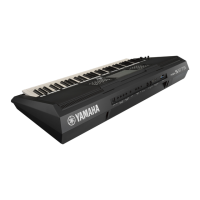
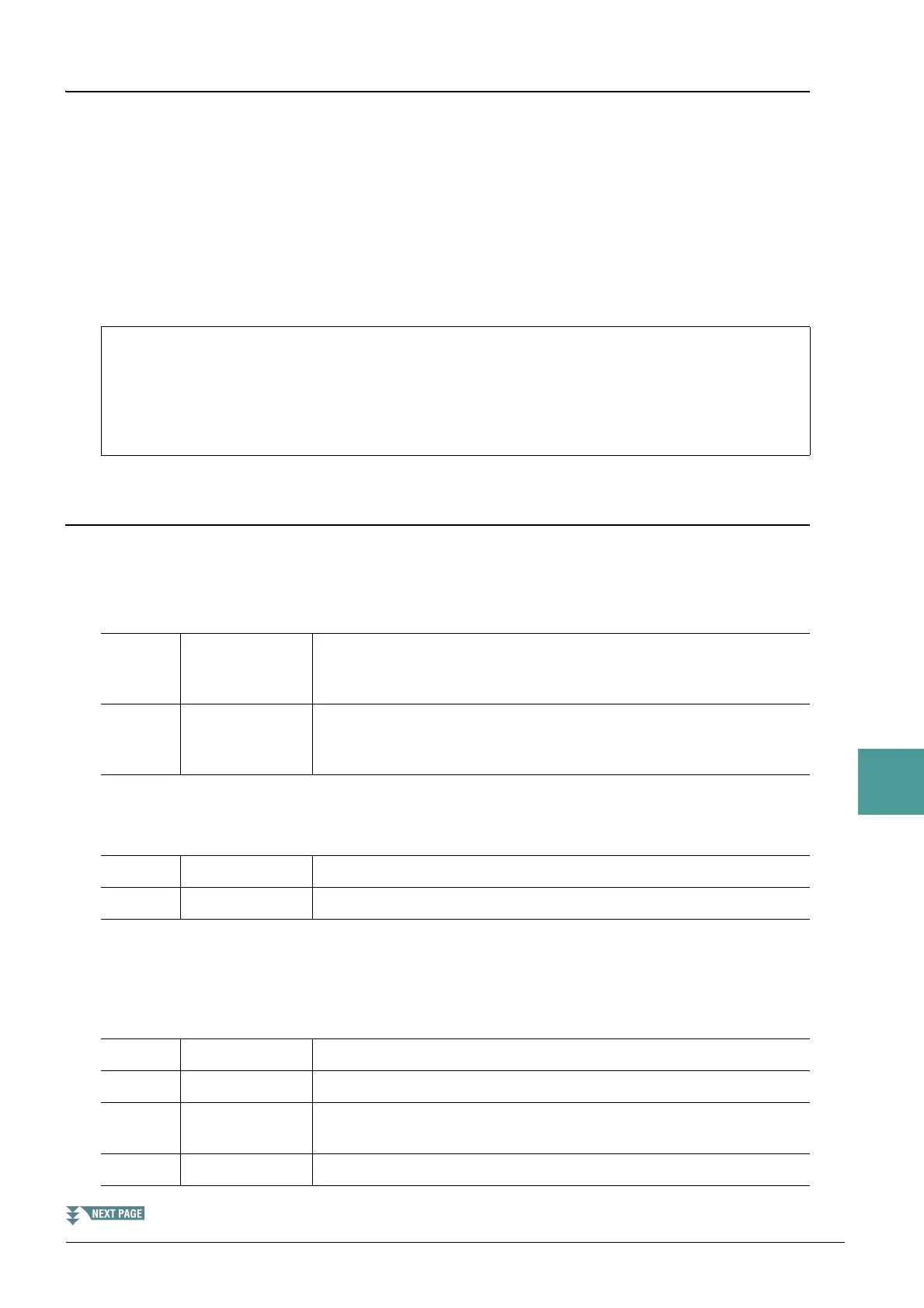